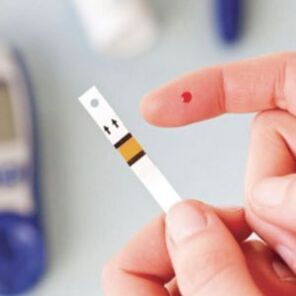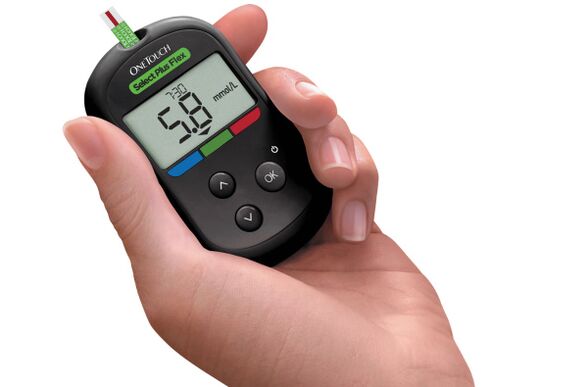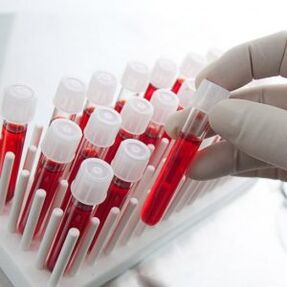
Symptoms of diabetes is a set of clinical manifestations of specific for a given disease, which indicates to doctors and patients to the occurrence or progression of the pathological process.
Diabetes mellitus is recognized as one of the most common diseases in the world, today 350 million people around the world have already suffered. According to statistics, in just two decades, the number of cases increased by more than 10 times. About 90% of these people - diabetes of the second type.
If you identify the pathology in the initial stages, you can avoid a huge number of severe complications. That is why it is so important to know what indicates the onset of the disease, and how a person needs to be examined in order to control this severe endocrine pathology.
Manifestations of diabetes do not depend on its type. The human body is able to understand when a sufficient level of energy stops coming from the glucose necessary in this case, into the results of a violation of its metabolism, and it remains in an abundance in the bloodstream, causing tremendous irreversible harm to systems and organs. The metabolic processes disturbed in the body are provided by a lack of insulin, which is responsible for the process of glucose metabolism. But the features of the pathogenesis of diabetes of the first and second types have significant differences, so it is necessary to know exactly the symptoms of each of them.
The main symptoms
The lack of insulin in the blood or a decrease in the sensitivity of insulin -dependent cells to the action of insulin in the body leads to a high concentration of glucose in the blood. In addition to this symptom, which is considered the main diabetes, there are other signs that are detected during the patient’s medical observation. If the slightest suspicion of the presence of this disease occurs, it is worth seeking medical help, since early detected illness is subject to treatment, and in the modern world, even school -age children begin to suffer from diabetes.
The first manifestations

As the first manifestations of diabetes, doctors call a number of specific symptoms. In diabetes, patients always have polyuria - rapid and abundant urination, due to glycemia and the level of glucose in the urine. It is glucosuria that is the cause that prevents the absorption of liquid by renal structures. Polyuria is always accompanied by a thirst in which a person is able to consume up to 10 liters of liquid per day.
Despite the consumption of so many fluids, there is constantly a feeling of dry mouth. In the event of diabetes of the second type, along with thirst, a feeling of constant hunger appears. This is due to the fact that the insulin produced by the pancreas in large quantities circulates in the blood and is not used by its purpose, gives signals to the brain about the feeling of hunger.
A high level of glycemia causes serious harm to the body. Damage to the nerve fibers leads to the occurrence of diabetic polyneuropathy. The first sign of such a complication is the numbness of the fingers of the feet and hands and the occurrence of a strong pain in the limbs. If you start to act on the level of glucose in the blood in a timely manner, the development of this process can be stopped and the pain syndrome if you do not stop at all, it will be disturbing not so pronounced. However, if you miss the beginning of the progression of pathology, you can wait for very severe consequences - severe pain, innervation, trophic ulcers and other things.
With damage to high glycemia of the vessels of the eyes, diabetic angiopathy develops. Clinically, at first, the disease is manifested by a feeling of cloudstickness with a high concentration of glucose in the blood, then a decrease in visual acuity and even complete blindness in the absence of therapy are followed. The occurrence of any of the above symptoms, and even more so their complex, should force the patient to be urgently examined to detect insulin insufficiency.
External manifestations
Among external signs there are also those that indicate the occurrence of insulin resistance and high glycemia. For example, such a symptom can be a sharp development of dry skin, itching and peeling. It is especially important to pay attention to such skin manifestations against the backdrop of the concomitant thirst. Also, with diabetes, itching occurs very often on mucous genital mucous membranes, due to the irritating effect of glucose contained in the urine. There are no discharge at the same time, which is a distinctive feature of diabetes.
Also, a sharp weight loss is a signal of the onset of diabetes of the first type. In this case, it is necessary to observe for some other symptoms of pathology so as not to draw hasty conclusions. Obesity and excessive body weight is not a symptom of diabetes of the second type, but rather can act as its cause. In any case, if the weight of a person is rapidly changing in any direction for no apparent reason, it is worth paying attention to this and undergoing an examination by a doctor.
Symptoms of diabetes
The first type

The first type diabetes is very rapid in its development. He has his own specific manifestations that should be paid to.
The patient has an increased appetite in his history, but he only loses weight, exhausted, suffers from drowsiness. Frequent urges do not allow the toilet at night to sleep calmly, forcing them to get up several times. The amount of urine in this case increases significantly, as the feeling of thirst progresses.
Such symptoms cannot go unnoticed, since it occurs very sharply and suddenly. It is accompanied by nausea, vomiting and severe irritability. It is especially important to pay attention to the constant urge to the toilet at night in children, if this was not previously observed.
The main problem of diabetes of the first type is the fact that the glucose level can also increase in the blood and decline very sharply. Both of these states are dangerous to health and have their own characteristics and manifestations, which must be carefully monitored.
The second type
The most common is the second type of diabetes. Its manifestations are very diverse, they appear gradually, so it is difficult to immediately catch and recognize them. Mild symptoms usually do not lead to the fact that a person, having discovered it at home, begins to immediately sound the alarm.
The second type of diabetes is characterized by the occurrence of dry mouth, thirst, abundant urination, loss of weight, fatigue, weakness and drowsiness. A feature of this variety of the disease in the early stages is the presence of tingling in the fingers and numbness of the limbs, hypertonic manifestations, the occurrence of infectious processes in the urinary system. Similarly, the first type of diabetes of the patient can be disturbed by nausea and vomiting, dryness and itching of the skin, and skin infections.
It is important to remember that the gradual development of symptoms leads to the development of the disease itself. Diabetes in the later stages are fraught with the occurrence of a hyperosmolar comlar, lactoacidosis, ketoacidosis, hypoglycemia, which gain momentum in a couple of hours and can even lead to the death of the patient. Also, as a result of advanced diabetes, patients often have serious vision problems, subsequently leading to complete blindness, renal or heart failure, pathology of the vascular and nervous systems.
During pregnancy

Diabetes gestational sugar is rarely manifested by some specific external signs. Most often, its presence is found out with planned examinations that are carried out regularly to pregnant women. The main indicators are data from blood and urine tests.
In the presence of external signs of the gestational type of disease, they are all very similar to the symptoms of diabetes of the first two types - nausea, vomiting, weakness, thirst, infection in the genitourinary system are not separately signs of toxicosis and other pathologies, but indicate in the second and third trimester of pregnancy about the occurrence of gestational diabetes.
The gestational form of pathology of the direct threat to the life of a mother or child does not carry, but it can affect the general course of pregnancy, the well -being of the future mother, and the fetus.
High blood content in glucose leads to the birth of a baby with a high weight (more than 4 kilograms), which in the future will be a prerequisite for his obesity or incidence of diabetes at any age. A delay in the development of the child, hypoglycemia, jaundice at the first pores of the life of the newborn may also be manifested.
Signs of complications
Diabetic foot
Diabetic foot in medicine is understood as a comprehensive anatomical and functional change in tissues of the distal parts of the lower extremities in patients with diabetes. This is the most formidable complication of the pathology under consideration, often leading to gangrene, amputation of the limbs and disability.

If there is a history of diabetes in the state of health of the legs, you need to be monitored very carefully. There are three main forms of diabetic foot: neuropathic (predominant nerves damage), ischemic (predominant lesion of blood vessels and blood flow disorder), mixed.
Among the complaints of patients preceding the diabetic foot, specialists distinguish unpleasant feelings, burning and stitching sensations in the legs, goosebumps, a sense of current discharge. If such symptoms disappear when walking, this indicates the beginning of the development of the neuropathic form of the diabetic foot. It is also important to pay attention if the sensitivity periodically disappears. If painful sensations arise directly when walking or at night (you can reassure only by laing the limbs from the edge of the bed), then this means the beginning of the development of the ischemic form of the diabetic foot called "ischemic foot".
Among the signs indicating the start of the development of the diabetic foot, experts distinguish the skin of the skin on the legs or the occurrence of pigment spots, peeling and dry skin in this zone, the occurrence of multi -caliber bubbles on the skin with transparent liquid, often occurring corncles, cracks between the fingers, deformation of the nail plates on the legs, thickening of the skin kernels, spontaneousFractures of small bones on the legs. If a person notices at least a few such signs, he should urgently seek medical help.
Signs of retinopathy
Diabetic ophthalmology is manifested by a change in blood vessels in the retina, leading to a violation of microcirculation in it. Such a violation leads to the occurrence of diabetic retinopathy. Such a complication develops gradually and even in the later stages it can be almost invisible to a person.
The main signs of diabetic retinopathy are:
- the emergence of "flies" before the eyes;
- blurred vision;
- decrease in visual acuity in the later stages;
- Hemorrhages in the vitreous body and retina.
In this case, diabetic ophthalmology can manifest itself by two main forms - non -spheret (background), or retinal proliferative retinal retinal. With background retinopathy, pathology concerns, first of all, the retina itself. In case of violations in the capillary vessels of the retina, hemorrhages, retinal swelling, and deposition of metabolic products occur. Background retinopathy is characteristic of elderly patients with diabetes. It provokes a gradual decrease in visual acuity.
On the basis of the background, proliferative retinopathy is developing if the osigal support deficiency will increase. In this case, there is a pathological formation of new blood vessels sprouting from the retina into a vitreous body. This process leads to hemorrhages in a vitreous body and a sharp progression of vision of vision in a person and irreversible blindness. In adolescence, such a transition of complication from one form to another can occur in a couple of months, then the retinal detachment and complete loss of vision will follow.
Signs of encephalopathy

Diabetic encephalopathy occurs as a complication of diabetes, due to diffuse degenerative damage to the brain. The prevalence of encephalopathy is directly dependent on the type of diabetes, and its symptoms - on the duration of the course of the disease and its severity. It belongs to late complications and manifests itself 10-15 years after the manifestation of diabetes.
The immediate cause of the development of encephalopathy is the metabolic disorders typical of diabetes, leading to damage to brain tissues and blood vessels. The above processes lead to a violation of brain activity, a decrease in cognitive functions. The development of encephalopathy occurs very slowly, which leads to the difficulty of detecting its symptoms in the early stages.
The main symptoms of diabetic encephalopathy are:
- headaches and dizziness;
- emotional instability, high fatigue, sleep disturbances and other neurasthenic disorders;
- instability of human gait;
- The bifurcation of objects when looking at them, the nebula of vision, the flickering of the "flies" before the eyes;
- mental, depressive disorders;
- confused consciousness;
- deterioration of mental activity, memory, ability to concentrate;
- strokes, transient ischemic attacks, other pathologies of cerebral circulation;
- The occurrence of seizures.
At the initial stages, there is practically no complication of the clinic, and with the development of encephalopathy, the symptoms begin to appear more clearly. Symptoms are identical with both types of diabetes.
Frequent diabetes satellite are atherosclerosis, arterial hypertension and obesity. In connection with the pride of blood vessels in the event of atherosclerosis, the risk of ischemic strokes and heart attacks increases. In case of violation of microcirculation in the renal vessels, an irreversible renal failure occurs, which eventually leads to a complete cessation of the function of the kidneys. This, in turn, leads to the need for replacement therapy of renal failure by the method of lifelong dialysis.
Diabetic coma
Diabetic cat means a serious impairment of metabolic processes in the body of a patient suffering from diabetes. A coma can occur both with a strong increase, and with a strong decrease in human blood sugar.
This condition requires urgent medical care, since in its absence, serious complications and even deaths are possible.

A coma develops in stages, but quite rapidly. The first sign of confluence in whom can be a fiction state, the rapid growth of blood sugar, nausea and vomiting, drowsiness, pain in the abdomen per day or more before the immediate coma. Another symptom of the diabetic coma can be the pungent smell of acetone from the patient's mouth. Sensitivity can also occur in convulsions, thirst, thirst.
With a hypoglycemic coma, the concentration of sugar in the blood decreases sharply. The indicator can reach the mark of 2. 5 mmol per liter and below. Among the obvious symptoms of such a coma, unreasonable anxiety, fear of the patient, a sense of weakness, cramps, falls of blood pressure, and loss of consciousness stand out. The precursors of the occurrence of a hypoglycemic coma can be:
- general malaise;
- lack of appetite;
- diarrhea or constipation;
- Dizziness, headaches, tachycardia.
Lack of assistance in this state can lead to extremely serious consequences. Since the hypoglycemic coma develops rapidly, the assistance provided should be urgent.
A sharp decrease in blood pressure in the patient, weakening of the pulse, and the softness of the eyeballs may indicate a sharp decrease in blood pressure. Only a qualified doctor can bring a person to his senses in this state, so the ambulance call should follow as soon as possible.
Laboratory signs

You can reliably find out the diagnosis of the patient only after all the necessary laboratory tests. Any laboratory tests for diabetes are aimed at determining blood glucose indicators.
It is possible to accidentally identify sugar in the blood with mass examinations of a person before hospitalization or with an emergency determination of other indicators.
The most common is a blood test for sugar, on an empty stomach. Before its delivery, nothing can be eaten for 8-12 hours. Also, you can’t drink alcohol and you can’t smoke an hour before blood donation. The level of up to 5. 5 mmol per liter will be considered a normal indicator. If the indicator is equal to 7 mmol per liter, the patient will be sent for an additional examination. For this purpose, they are tested for glucose tolerance. For this, the patient donates blood on an empty stomach, then he drinks a glass of water with sugar (75 grams for an adult for 200 milliliters of water), and 2 hours after that he re -passes a blood test.
If the body is in normal condition, then the first analysis will show the result of up to 5. 5 mmol per liter, and the second - up to 7. 8 mmol per liter. If the indicators are in the range, respectively, 5. 5-6. 7 and 7. 8-11. 1 mmol per liter, then this will tell the doctors about the development of pre-antiabet in the patient. Indicators exceeding these numbers indicate diabetes.
It is also customary to conduct a study on glycated hemoglobin, demonstrating the average value of human glucose over the past 3 months of life. The norm is the indicator below 5. 7%. If the value is between 5. 7-6. 4%, then this suggests that there is a risk of type 2 diabetes mellitus. In this case, measures should be discussed with the doctor to reduce such risk. If the level of glycated hemoglobin is more than 6. 5%, the diagnosis of diabetes is likely, but it requires confirmation. The recommended level of glycated hemoglobin in people with diabetes is less than 7%, if this level is higher, it is necessary to discuss the situation with your attending physician. It should be borne in mind that the level of glycated hemoglobin above 7% can be estimated by the doctor as optimal.
Symptoms of a child
Diabetes can manifest at any age, including the early children. Even diabetes of newborns are found. This is a rare case of an innate nature of the disease. Most often, the manifestation in children accounts for 6-12 years. The metabolic processes in children during this period proceed much faster, and the condition of the non -formed nervous system can affect the level of glucose in the blood. The younger the baby, the more complicated the diabetes.
Among the main symptoms that parents need to pay attention to so as not to miss the development of diabetes in children, doctors distinguish:
- thirst and dry mouth;
- nausea with vomiting;
- frequent urination with stickiness of urine;
- weight loss and high appetite at the same time;
- a drop in visual acuity;
- High fatigue, weakness and irritability.
If a child has at least one of the above symptoms, this is a reason for seeking a doctor. If several symptoms are detected, at the same time, a doctor should be immediate.
Also among symptoms in children, typical and atypical signs of diabetes may occur. Doctors attribute to typical symptoms that the parents of the kids often confuse with an age -related urinary incontinence, polydipsy, polyphagic, dryness and itching of the skin, the itching of the genitals after urination, the amount of blood sugar is more than 5. 5 per liter per liter when a blood test is tested. Timely diagnosis in case of suspicion will help identify the disease at an early stage and begin the necessary therapy, which will not allow complications to develop.
Determination of diabetes mellitus at home
The course of diabetes can be absolutely asymptomatic. It can be identified randomly when visiting an optometrist or any other doctor. However, there are a lot of signs by which the presence of pathology can be guessed independently. Moreover, at home, you can quite accurately establish the type of disease.
With a healthy body, after eating in the blood, sugar levels increase. After 2-3 hours after this, this indicator should return to its original boundaries. If this does not happen, then a person has a number of symptoms that cannot be noticed. This is already considered dry mouth, thirst, very frequent and abundant urination, increased appetite, apathy, cramps, nebulae of consciousness. Gradually, a person begins to notice the dryness of the skin, which previously did not manifest itself.
Also at home, you can suspect the occurrence of diabetes on various strange sensations that a person has not previously observed. In the second type of diabetes, this is poor healing of wounds and scratches, the development of obesity. In the first type of pathology, a person, on the contrary, can sharply lose weight, although the appetite is quite high. Also, with all types of disease, itching of the skin can occur, increased hair growth on the face, the formation of xanth (small yellow growths on the skin), hair loss on the limbs and others.
Timely identification of signs of diabetes should cause a doctor.
Only if you start the therapy for diabetes in the early stages, we can hope for compensation for the disease and the normal quality of life in the future.
























